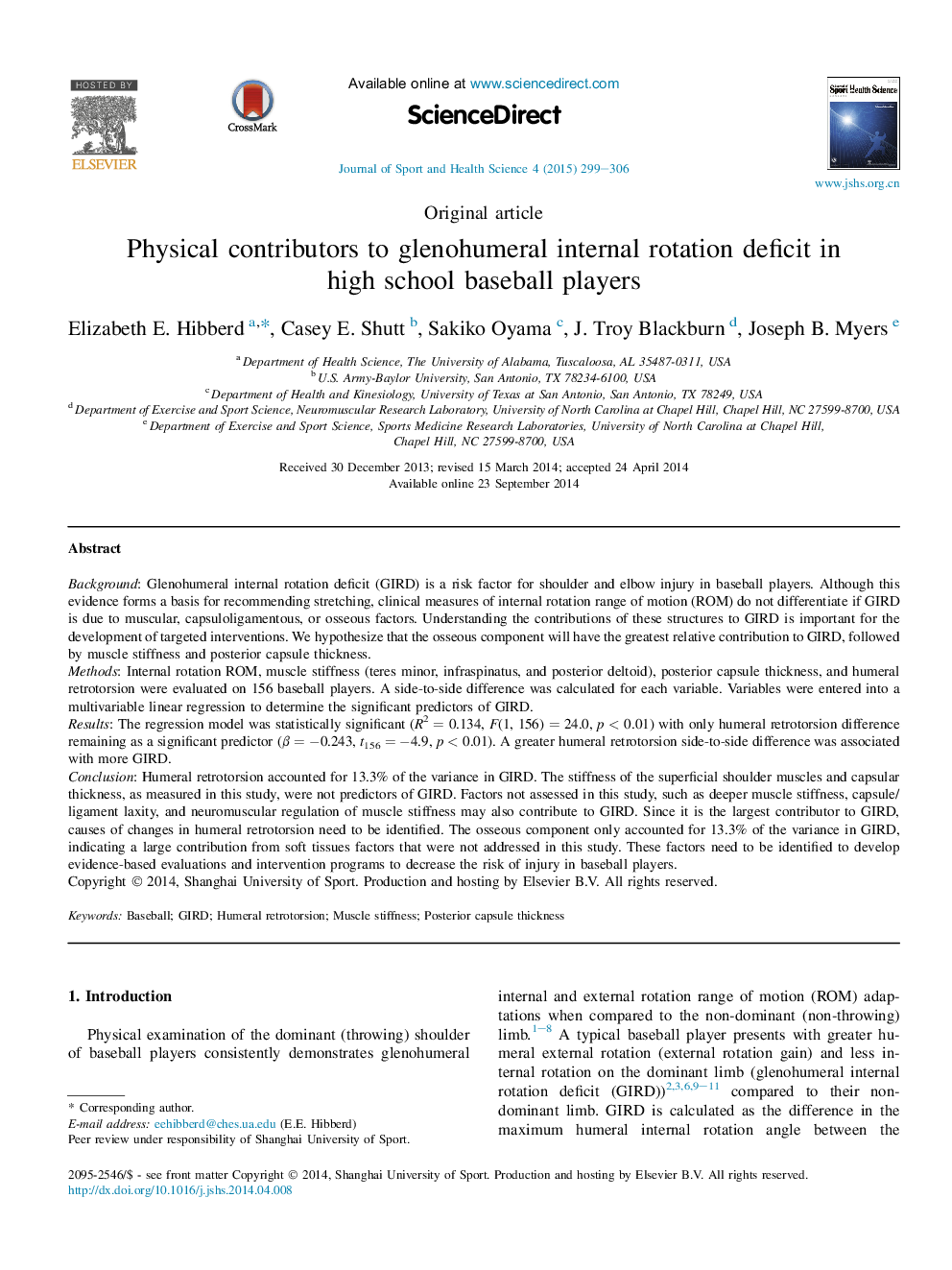| کد مقاله | کد نشریه | سال انتشار | مقاله انگلیسی | نسخه تمام متن |
|---|---|---|---|---|
| 1084205 | 951264 | 2015 | 8 صفحه PDF | دانلود رایگان |
BackgroundGlenohumeral internal rotation deficit (GIRD) is a risk factor for shoulder and elbow injury in baseball players. Although this evidence forms a basis for recommending stretching, clinical measures of internal rotation range of motion (ROM) do not differentiate if GIRD is due to muscular, capsuloligamentous, or osseous factors. Understanding the contributions of these structures to GIRD is important for the development of targeted interventions. We hypothesize that the osseous component will have the greatest relative contribution to GIRD, followed by muscle stiffness and posterior capsule thickness.MethodsInternal rotation ROM, muscle stiffness (teres minor, infraspinatus, and posterior deltoid), posterior capsule thickness, and humeral retrotorsion were evaluated on 156 baseball players. A side-to-side difference was calculated for each variable. Variables were entered into a multivariable linear regression to determine the significant predictors of GIRD.ResultsThe regression model was statistically significant (R2 = 0.134, F(1, 156) = 24.0, p < 0.01) with only humeral retrotorsion difference remaining as a significant predictor (β = −0.243, t156 = −4.9, p < 0.01). A greater humeral retrotorsion side-to-side difference was associated with more GIRD.ConclusionHumeral retrotorsion accounted for 13.3% of the variance in GIRD. The stiffness of the superficial shoulder muscles and capsular thickness, as measured in this study, were not predictors of GIRD. Factors not assessed in this study, such as deeper muscle stiffness, capsule/ligament laxity, and neuromuscular regulation of muscle stiffness may also contribute to GIRD. Since it is the largest contributor to GIRD, causes of changes in humeral retrotorsion need to be identified. The osseous component only accounted for 13.3% of the variance in GIRD, indicating a large contribution from soft tissues factors that were not addressed in this study. These factors need to be identified to develop evidence-based evaluations and intervention programs to decrease the risk of injury in baseball players.
Journal: Journal of Sport and Health Science - Volume 4, Issue 3, September 2015, Pages 299–306
